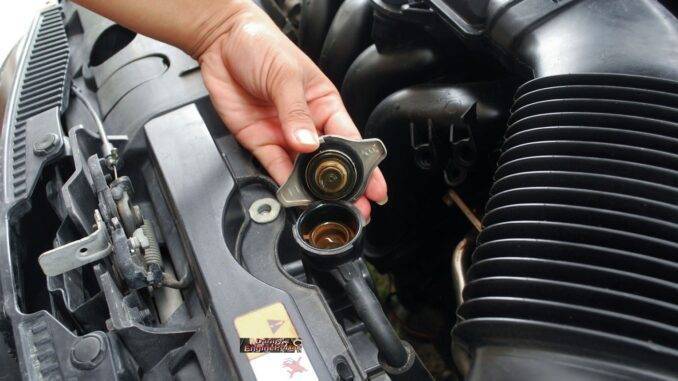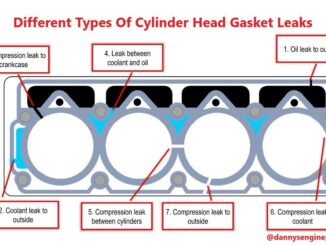
Radiator Caps, are designed to ensure that, the prescribed pressure in the cooling system, is maintained at all times.
And, this is done by allowing air to escape, when the pressure exceeds a preset amount.
That’s why, radiator caps should be considered “the safety valve” of the cooling system.
Radiator caps do more than just one thing, and therefore can fail in a variety of different ways.
Radiator Caps: What do They Do? How Do They Work? How Can They Fail?
So, Radiator Caps Do Several Things:
- Seals the system against, the outside world. (main seal function)
- Keeps the system pressurized when needed, so as to raise the boiling point of the coolant.
- Allows excess pressure and coolant to be able to vent, to the expansion tank. (pressure seal function)
- Allows coolant to return to the radiator, when the engine cools down. (return seal function)
Radiator Caps Have Three Seals, Any Of Which May Fail Independently Of The Others:
- Sealing the cap against the top of the filler neck, is the job of the main seal. The main seal keeps the whole system sealed, and is considered the most important seal.
- Radiator caps with a leaking pressure seal, will allow the coolant to boil, at a lower temperature. And, coolant will be able to travel freely, to the expansion tank. This could result in, localized hot-spots inside the engine. This may lead to premature cylinder head warping, and may hasten head gasket failure. It will also cause, the engine coolant level to be low, just like a failed head gasket.
- A faulty return seal, may prevent coolant from, returning to the radiator. This may lead to, collapsed radiator hoses, due to the excessive vacuum. This will prevent the coolant from circulating, if the hoses don’t re-expand as the engine warms up.
Also, Bad Radiator Caps Can Cause Symptoms, Similar To A Failed Head Gasket
If you replace the radiator caps, and you still have bubbles in the coolant. (or foam in the recovery tank) Then, suspect the head gasket. So, if the engine starts to overheat at idle or in heavy traffic. And, the gauge goes down when you rev it, the coolant is probably low.
Moreover, a neglected cooling system, can load up radiator caps with crud and corrosion. As a result, preventing proper coolant flow in and out through it. Peel the seals back with your fingernail, to check for goop. Consequently, if you find any, just replace the cap.
Conclusion
So, if you suspect the cap is failing, give it a complete visual inspection. Start by looking for any damaged, cracked, hardened or worn out seals. Finally, if the seals look bad, just replace the cap. Because, radiator caps are cheap!
BY DANNY BENDER




